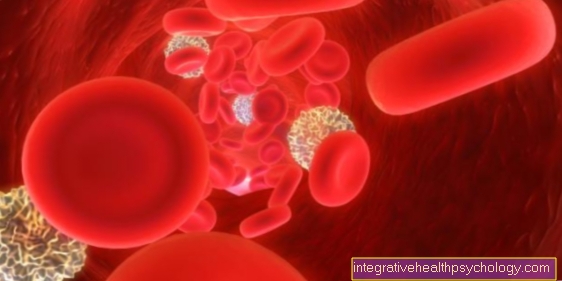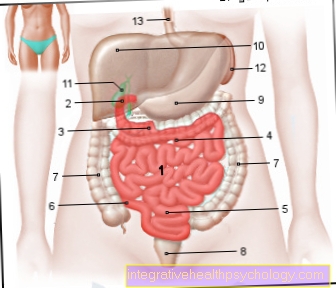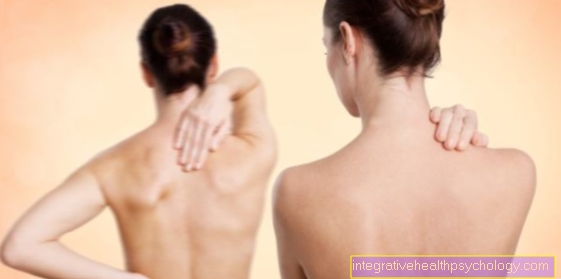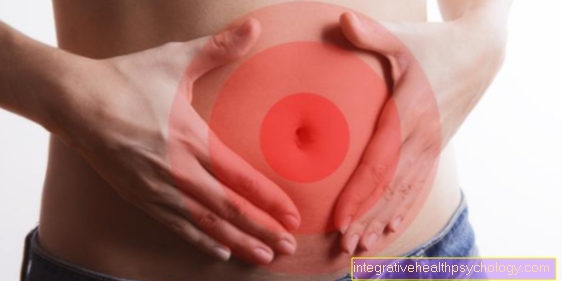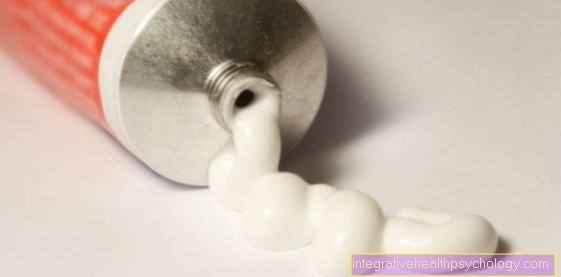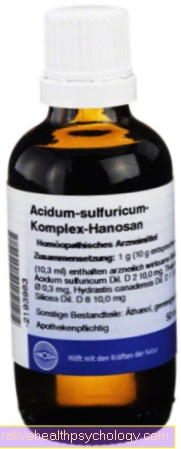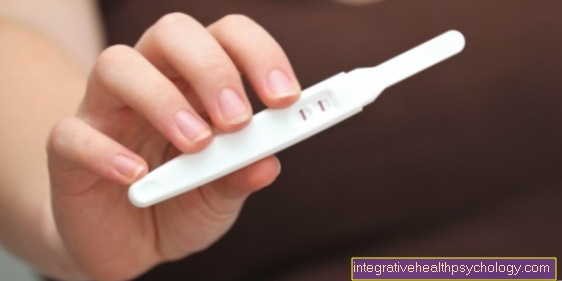Paleo diet
What's the Paleo diet?
The term "Paleo" is the abbreviation for the period of the Paleolithic, the Paleolithic. The paleo diet, also known as the stone diet, is based on the original diet of hunters and gatherers and mimics it with foods available today. The paleo diet places a great focus on high quality food and sustainability. With this diet, the basis of the diet is represented by foods that were available in a similar form in the Stone Age, i.e. in the 2.5 million year evolution. The Stone Age diet is said to help reduce typical widespread diseases that are allegedly caused by the consumption of industrial goods and grain. These include, for example, diabetes mellitus, obesity and cardiovascular diseases.

Course of the Paleo Diet
The diet plan for the Paleo diet consists mainly of fat and protein sources as well as fruits and vegetables. Only natural products are allowed to be eaten. Grain products, industrial sugar, legumes and dairy products are avoided. Alcohol, coffee and tobacco are also prohibited. The principle behind it is relatively simple. We should only eat what people consumed thousands of years ago before the discovery of agriculture and arable farming. After all, no industrially processed goods were available in the Stone Age. The most important paleo foods include meat, fish, eggs, lettuce, nuts, (animal) fat, fruits and vegetables. When it comes to meat, it is essential to pay attention to the quality, as factory farming does not at all correspond to the Paleo diet concept. Most of the time, a gradual introduction to Stone Age nutrition is recommended, for example gradually over a period of 30 days.
What does a paleo breakfast look like?
For many people who are new to the Paleo Diet, the biggest challenge is with breakfast. Many people miss the chocolate muesli or white bread for breakfast. Nevertheless, there are numerous ways to make breakfast sweet, salty or savory. One way to design a paleo granola without sugar and grains includes:
- Cashew nuts,
- Almonds,
- Coconut flakes,
- Hazelnuts,
- Brazil nuts,
- Sunflower seeds,
- Chia seeds, coconut oil,
- Honey and
- ground vanilla.
If desired, you can add sweet raisins and dried fruits. The whole thing is chopped up and roasted in a preheated oven for 20-25 minutes. Another breakfast idea is sweet scrambled eggs with fruit. Mix two egg yolks with honey and lemon juice, fry the whole thing with ½ tablespoon of coconut oil and add pieces of mango with coconut or banana with almond and cinnamon as required. Bread lovers can prepare their own paleo grain bread, which is baked purely from seeds and kernels. For this you need:
- Flaxseed flour,
- Sunflower seeds,
- Pumpkin seeds,
- Sesame seeds,
- Ghee,
- Tahini,
- Baking powder,
- Eggs,
- ground vanilla,
- Cinnamon and
- Salt.
The dough is baked for 40 minutes and then cooled. You can also eat homemade guacamole or the bread with the curry broccoli salad.
What does a paleo lunch look like?
There are many ways to eat digestible and healthy with the paleo diet. The extensive Paleo recipes contain neither grains, dairy products nor added sugar. Examples are a turkey roulade with asparagus salad and a snapper fillet with paprika ragout. Homemade bread made from seeds and seeds can also be eaten with salad or vegetables for lunch.
What does a paleo dinner look like?
Like lunch, dinner can be varied and healthy. There are numerous delicious recipes that contain lots of valuable vitamins and minerals. To lose weight in a targeted way, there are light recipes, such as a fresh grapefruit and avocado salad or an exotic fish and coconut curry. Spicy braised onions with poultry liver, leg of lamb from the oven or homemade sweet potato fries can also be eaten as dinner.
Side effects of the Paleo diet
For many people, renouncing grain and switching to lipid metabolism means that the body needs a certain amount of time to get used to. At the beginning of the diet, one often feels weak and tired. It can take a few weeks for the metabolism to change. Depending on how you use and combine the permitted foods, digestive problems can occur at the beginning of the diet change. If you have recently started to eat a lot of vegetables, the body is supplied with a lot of fiber, which can cause a feeling of fullness and gas.Eating a lot of meat can lead to constipation. After the acclimatization period, digestive problems usually subside, provided that the menu is balanced.
Criticism of the Paleo Diet
There are numerous scientists and modern medical professionals who consider the basis of the Paleo diet to be nonsense, since our genes have evolved over the millennia. The scientist Jonathan Pritchard of the "Department of Genetics and Biology" at the renowned Stanford University proved in 2006 that around 700 human gene regions have changed over the last 5,000 to 15,000 years. Evolutionary biologists also criticize that the types of fruits and vegetables we eat today are not comparable to those from 10,000 years ago. The scientific background of the paleo diet is heavily criticized overall. Nonetheless, avoiding processed foods and industrial sugar seems generally healthy.
Many critics also criticize the high meat consumption in the paleo diet, which means a high protein intake for the body. You should therefore pay attention to a balanced menu.
What are the risks / dangers of the Paleo Diet?
As long as one does not eat too much meat, no pronounced health risks are to be expected with the paleo diet. If meat is consumed too much, the level of uric acid in the body rises, which in the long term increases the risk of developing kidney stones or gout. The blood lipid values should also be monitored with a high meat consumption, as these can increase the likelihood of the development of vascular calcification (arteriosclerosis) and cardiovascular diseases in the long term.
Where Can I Find Good Paleo Diet Recipes?
On the Internet you can find countless delicious recipes for the paleo diet, which you can cook very well. There are recipes with different degrees of difficulty and time expenditure. The situation is similar with diet books on the Paleo diet, which often contain detailed diet plans and shopping lists for the recipes. Depending on whether you prefer to research the Internet and look for specific ideas or leaf through the book, you can find delicious recipes for the paleo diet.
How much can I / should I lose weight with this form of diet?
With the Paleo diet, the weight loss depends very much on the initial situation and the implementation of the diet. You can make the menu with the Paleo diet flexible and depending on how many calories you eat each day, the weight loss will be different. By avoiding fast food, sweets, alcohol, etc., weight loss is very satisfactory for many people. With the Paleo diet, you can lose up to 8 kilograms in 14 days.
How can I avoid the yo-yo effect with this diet?
The risk of a yo-yo effect is generally rather low with the paleo diet, as most people understand it to be a change in diet rather than a diet for a few days or weeks. If you want to break off the Paleo diet after a while, you should make a slow transition to a healthy, balanced diet and gradually bring foods that are forbidden on the Paleo diet onto your plate. Regular exercise helps to maintain the desired weight in the long term.
Medical evaluation of the diet by
If you want to lose weight, the paleo diet is helpful as many sins such as fast food, pizza, white flour and sugar are removed from the menu. Many people find it difficult to do without breakfast rolls, muesli or pasta dishes. This means that a particularly large number of classic carbohydrate suppliers are being removed from the menu. However, there are Paleo-appropriate alternatives for these dishes, which are, however, quite expensive. Examples include crunchy muesli made from nuts and seeds or homemade paleo-style bread. The switch to the Stone Age diet is radical, requires a lot of willpower, time and money to buy the high-quality food and to prepare it in a paleo-friendly manner. When implementing the diet, one should pay attention to a balanced menu and not consume too much meat, as this can be harmful in large quantities. The Paleo diet is particularly suitable for people who suffer from (perhaps even unnoticed) intolerances. There are many people with diseases such as neurodermatitis who have noticed an improvement in their symptoms while taking the Paleo diet. According to nutritionists, a great advantage of the diet is the fact that the paleo diet is very conscious about the food. Only fresh, unprocessed food ends up on the table, which you usually prepare yourself.
What alternative diets are there to the Paleo diet?
There are numerous diets that can be tried as an alternative to the Paleo diet, depending on how fast and long-term you want to lose weight. If, similar to the Paleo diet, you want to consciously devote yourself to the foods you eat, you can try the food combining diet, in which foods are divided into groups and only allowed to be eaten in certain combinations. The Logi method or the Glyx diet focus on how far certain carbohydrates raise blood sugar above normal. The Atkins method is also a popular method to lose weight with structured diet phases and a disciplined exercise program. To lose weight particularly quickly, many people try mono diets, such as the fruit or vegetable diet, the cabbage soup diet or diets with shakes, for example from Almased, Yokebe or Doppelherz®. In order to maintain the desired weight permanently, one should switch to a healthy, balanced diet after a diet and exercise regularly.
What is the cost of a paleo diet?
Basically, the Paleo Diet is not much more expensive than a healthy, balanced diet. Much meat, fish and seafood, which contain high-quality protein and animal fats, are consumed. According to the Paleo principle, factory farming should be avoided, which increases the product price, but corresponds to higher quality meat. Fresh fruits and vegetables are consumed in large quantities and cost more than finished products. However, it is worth spending money on these healthy foods to do something good for your body.
Paleo and alcohol - is that possible?
Basically, alcohol is avoided in the Paleo diet as it is implemented by us, as it slows down fat burning. Occasionally, paleos are allowed to drink alcoholic beverages if these are made without grain products or added sugar and made from pure fruits or vegetable juices. Alcoholic beverages such as grain, beer, whiskey, rice wine and sugared schnapps are strictly prohibited. Fruit wines (apple wine, cherry wine), white wine, red wine and mead or honey wine are more suitable.
Can a Paleo Diet Help With Autoimmune Disease?
The number of people suffering from chronic diseases, especially autoimmune diseases, is steadily increasing. Allergies, psoriasis, Hashimoto's thyroiditis, inflammatory bowel diseases such as Crohn's disease and ulcerative colitis, multiple sclerosis (MS), neurodermatitis and celiac disease and many more are increasing in our society. The exact causes of many autoimmune diseases are still unknown. However, many people report that adopting a healthier lifestyle and eating better can make a positive difference to their symptoms. The Paleo Diet has no scientifically proven effect on improving autoimmune diseases. Nevertheless, many chronically ill patients report positive effects of the paleo diet on their symptoms.
Can Children Eat a Paleo Diet?
Diets are fundamentally very controversial among children, whether it is vegan, vegetarian or paleo. The Paleo Diet provides children with numerous nutrients that they need to grow up healthy. The diet is based on natural, fresh foods that are better for children than industrially produced foods, which are often high in sugar and other additives. Such a diet is helpful in helping children relate to “real” food. They learn more easily what food looks like, how it feels, how it smells and finally how it tastes. In the case of children, it is essential to ensure that all nutrients, vitamins, minerals and trace elements are on the table in order to guarantee symptom-free growth. There should not be too much meat on the plate and lots of fruit and vegetables should be eaten.
Paleo diet and muscle building - is that possible?
The Paleo Diet is a diet that is also very popular with athletes. However, some athletes have concerns because conventional muscle building foods like dairy products, rice, and protein shakes are not paleo. Nevertheless, the Paleo diet provides a lot of healthy proteins and important micronutrients for building muscle. Since our muscles largely consist of protein, it stands to reason that precisely this building material must be available in sufficient quantities in order to achieve muscle growth. The Paleo diet is a protein-rich form of nutrition and provides the muscles with the necessary building blocks. Many Paleo foods also help to minimize inflammation in the body and to shorten the regeneration time of the muscle cells. In order to optimally design muscle building, three areas are important: training, nutrition and regeneration. The Paleo Diet can effectively increase training success.
Paleo diet during pregnancy - is it possible?
The question of whether the Paleo diet is suitable for pregnancy is being discussed critically in Germany. There are many proponents of vegan or paleo diets for pregnant and breastfeeding women. However, many orthodox doctors are of the opinion that unborn children and infants in particular need carbohydrates, milk and dairy products in order to have symptom-free growth.







